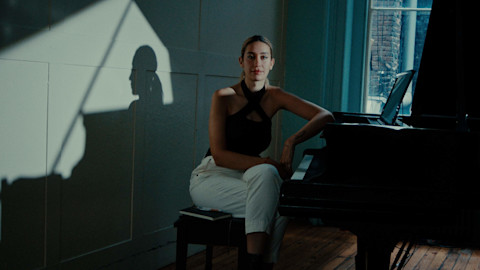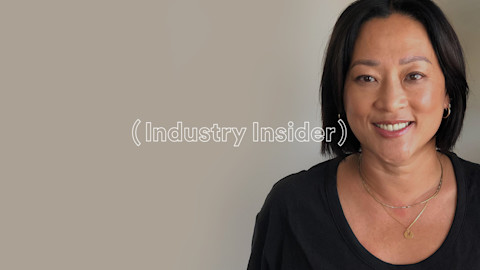Shlohmo describes how he teases out narratives—no words needed.
As the cofounder of a cutting-edge DJ collective (WeDidIt) and a producer with credits on songs by the likes of Post Malone and Chance the Rapper, Shlohmo should be dropping star-spangled compilation albums bursting with Top 40 beats. Instead, the Los Angeleno born Henry Laufer is celebrating the release of The End, a slowly unfurling guitar-assisted concept album about, well, the end: doomsday, the apocalypse, Armageddon. As if its topic weren't ambitious enough, this lo-fi, genre-defying masterpiece is completely instrumental. Considering Shlohmo also just scored his first film—Pippa Bianco's HBO-acquired Share—we figured this would be the perfect time to talk to him about how to tell a story without using a single lyric.
Spotify for Artists: What's the story behind The End?
Shlohmo: Whenever I'm making music my head is in this place that kind of feels like the end of the world—like the physical edge, a place removed from almost everything. So taking that concept and connecting it to my obsession with doomsday cults, and where we are today with stupid-people politics... the end of the world seems like a relevant narrative for this music to inhabit.
How do you build an instrumental album around an idea like that?
When I go into things, I don't necessarily think, "I'm going to soundtrack this concept." I feel like the only way for the music to come out as it does is for me to make it as I always have, which is just letting it do its thing. But no matter how much I try to meditate on nothingness when I'm making music, all my influences, shit I've been dealing with, and anything I've seen on the internet make it through. I guess my process is trying to avoid a process that would make it garish or a cliché.
So when does the concept take shape?
Once I've made the music, then it's time to piece things together, decide which sounds belong in this world, and figure out what the album is trying to say. I didn't imagine anything super-specific, like a big meteor coming or us nuking ourselves—the fun part for me was picturing myself as the conductor of some weird cult. That's where the track sequencing comes in, in building this kind of movie-like arc that can carry the listener through [the album] as one movement, but without words.
How does that play out? The album's exceedingly calm final track, "Still Life," opens on the sounds of birds and water. You have to wonder: Are the humans all gone?
Yeah! Exactly that—it feels like everything that once mattered has gone away and the dust has settled and left this kind of new dawn. "Staring at a Wall" has that apathetic or nihilistic feeling of literally staring at a wall, where everything sucks and you're just alone and that's it. "Watching a Video" is the almost brighter side of that, where you're basically doing the exact same thing, but there's this feeling of... not necessarily hopefulness, but being at peace with whatever's wrong.
"Headache of the Year" incorporates doom metal. "Panic Attack" employs skittery, nervous-sounding glitch. Can genre communicate narrative or mood?
Definitely. I think a lot of the genres that made their way into this music are based around a similar [moody] feeling, whether it's Memphis rap or horrorcore, ambient music that's on the "dungeon synth" side of things, cold and industrial '80s New Wave, doom metal, or the old trip-hop I grew up on. It all kind of has the same removal from the world in this kind of half-humorous way. The artists themselves may not see it like this, but to me it's different articulations of the same story.
What about instruments? The sounds you use feel like remnants from a lost civilization.
Yeah, the main melody in the song "The End" [came from] this old Little Tikes-style xylophone thing, baby's first instrument, and I played a few notes live, recording to this handheld tape player I've used for like 10 years. I didn't exactly know what it would sound like but I knew I wanted to physically shake the shit out of the tape player while I was sampling it to my computer—pause it, rewind it for a second, and manually glitch it so it gets all these weird bends and dirt in the notes. Then I would resample and resequence those notes to be what I was actually playing, in time.
It's surprising how sound quality itself can convey a lot.
The language I'm trying to speak is a fucked up one. For "Hopeless," I took a Fisher-Price kid karaoke machine, locked the speaker in my vocal booth and recorded it with a nice microphone, while outside I was humming and gurgling through the toy mike. The grittiness on the vocal is great but there was also this insane feedback that happened. I put effects on it afterward and it became another instrument in the song. There's shit like that throughout the whole album.
You recently scored Share. Was it easier to craft sounds to an existing narrative?
It was actually more challenging. My favorite scores are the ones I don't even realize I'm hearing because they just make the vibe better, so it was an amazing exercise in how to convey energy and feelings as minimally as possible. I'm accidentally maximal with my albums. They fill the space of dialog and narrative. That's why it's funny when people tell me, "Your music belongs in movies—it's so cinematic." I'm like, "Yeah, try it and you'll see. That's why it doesn't work."
—Chris Martins
Popular Stories
video
How Julia Wolf Made It




